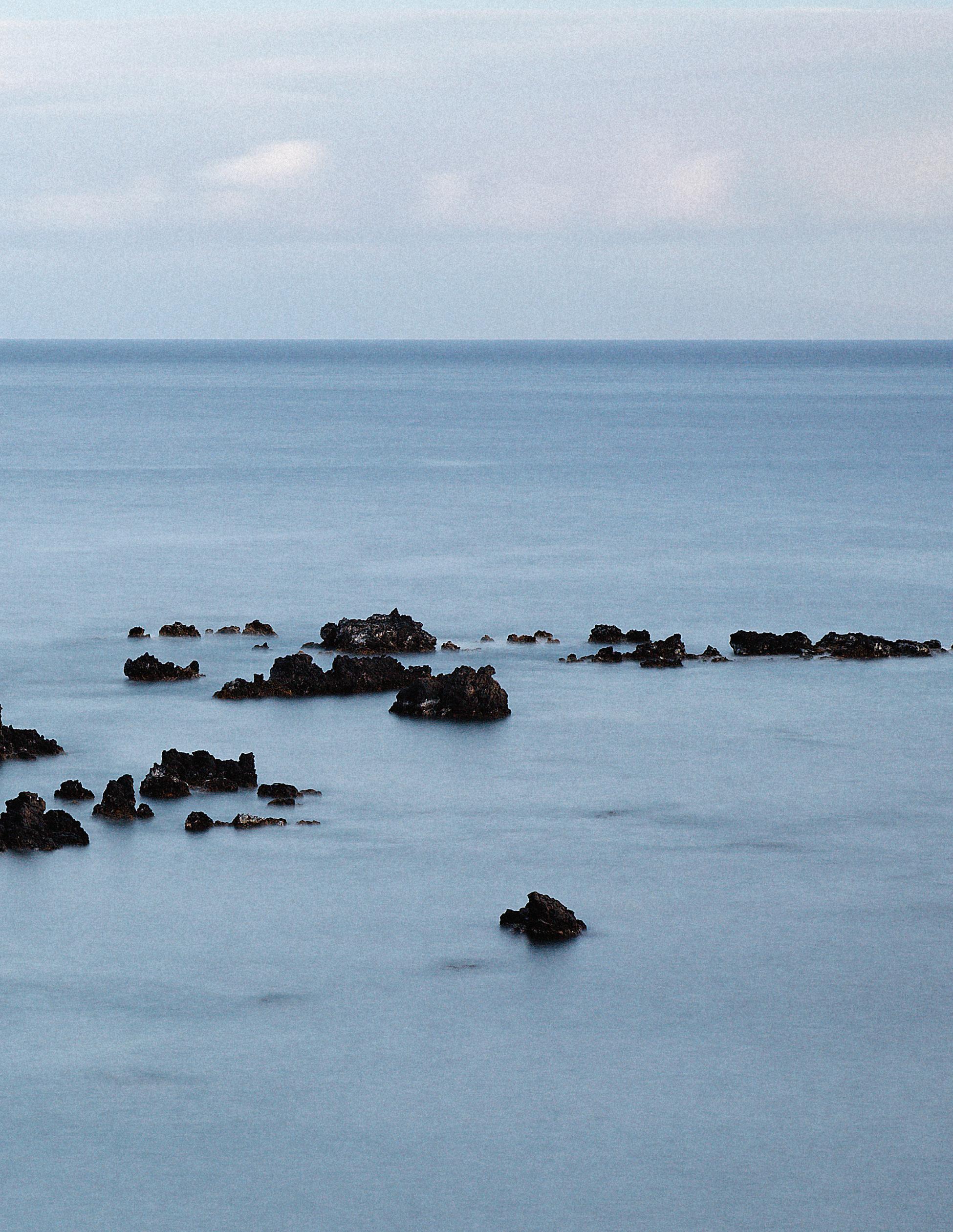
3 minute read
Mokulau: The Many Islets
By Aldei Kawika Gregoire
The landscape at Mokulau contains many captivating natural features, but perhaps the most notable is the group of rocks located just offshore. Indeed, the name Mokulau (many islets) specifically refers to these rocks. For the Kaupō residents of old, each of the sea rocks at Mokulau had a specific name as well as associated characteristics and traditions.
Advertisement
The most storied of these rocks is Moku Puhi (also called Moku Piko), set directly off the point at Mokulau. In ancient times, this rock was a popular location for depositing the piko, or umbilical cords, of newborns. It was important that piko be protected from harm; for instance, it was believed that a child would grow up to be a thief if the umbilical cord was stolen by a rat. Being offshore, Moku Puhi offered natural protection for piko. In addition, Moku Puhi is higher than surrounding rocks and protected from waves by Moku Hai (Breaker Rock), a rock just out from Moku Puhi. Moku Hai kept waves from washing over Moku Puhi and sweeping away piko.

The Many Islets of Mokulau
Aldei Kawika Gregoire
Aside from these natural features, there was also a supernatural guardian in the form of a giant puhi, or eel, that was reported to protect the rock and its precious goods.
Moving beyond Moku Puhi, the names of other rocks generally relate to fishing. Moku Aweoweo, at the northern end of the chain of rocks, abounded in aweoweo fish. At the southern edge, Moku Ahole was so named for its plentiful aholehole fish.

The Many Islets of Mokulau
Aldei Kawika Gregoire
Nearest to shore is Moku Kilena, named after a local fishing method of the same name. A useful technique for catching ulua, kilena involves stringing a line between two points of land with sea in between. A live bait fish was then hung into the water. At Mokulau, a kilena line would be strung from the shore to Moku Kilena.
The above information comes from interviews with Kaupō kūpuna Daniel Kawaiaea, Milton Kawaiaea, and Edmund Kalaola in Ka Nohona ma Kaupō ma waena o ka Makahiki 1930-1950, a master’s thesis by Diane Kawaiaea-Harris.

Aldei Kawika Gregoire
Aldei Kawika Gregoire is the grandson of Sam and Pauline Gregoire of Kaupō, Maui. Throughout his childhood he spent weekends in Kaupō developing a deep connection to place. He has combined his passion for Kaupō’s physical landscape and its associated stories with his interest in photojournalism. His website—www.kaupomaui.com— showcases an invaluable collection of Kaupō’s stories, photographs, place names, culture, and history. Please note that diacritical markings (‘okina and kahakō) have been omitted to remain consistent with original sources.










